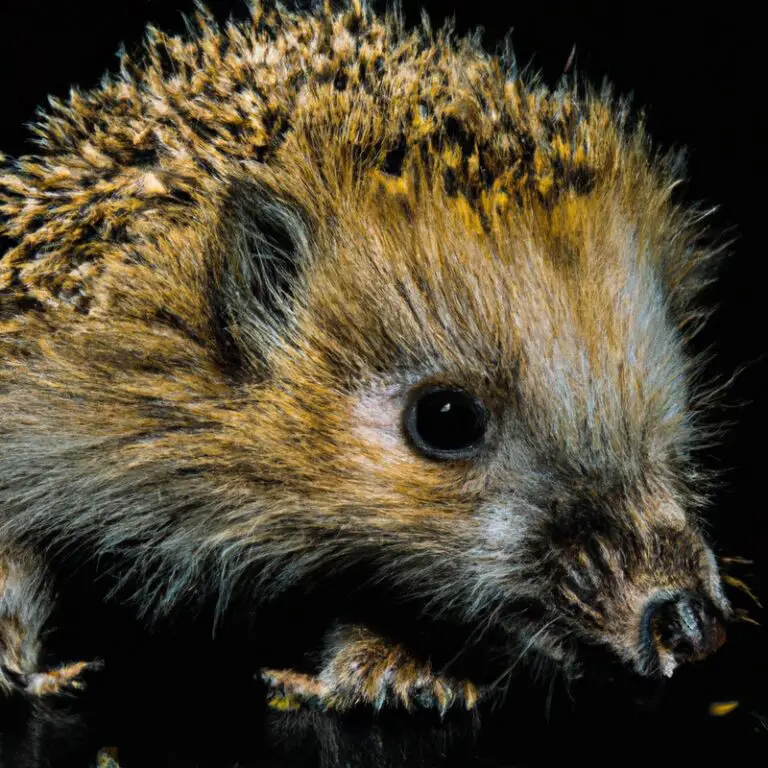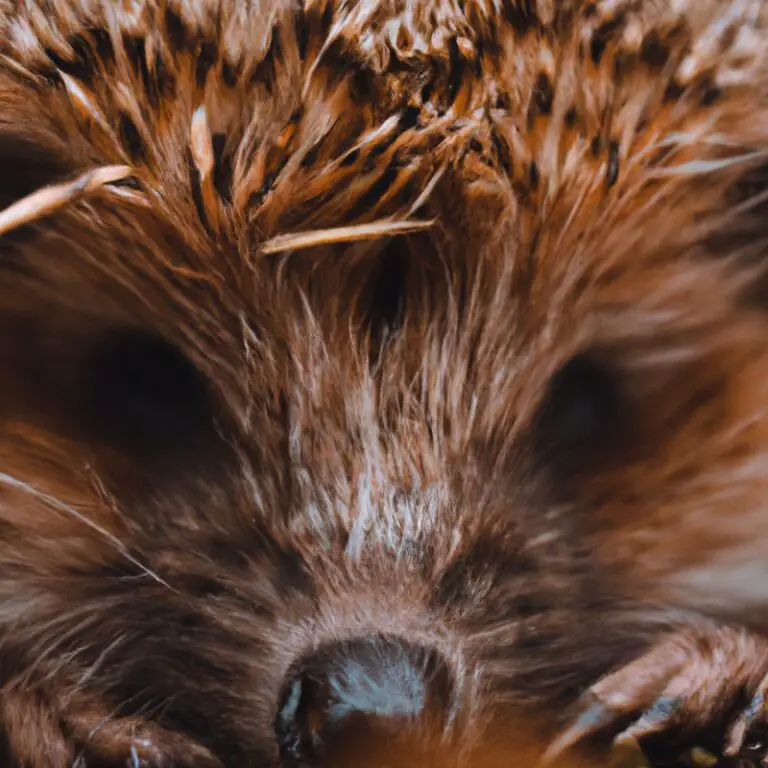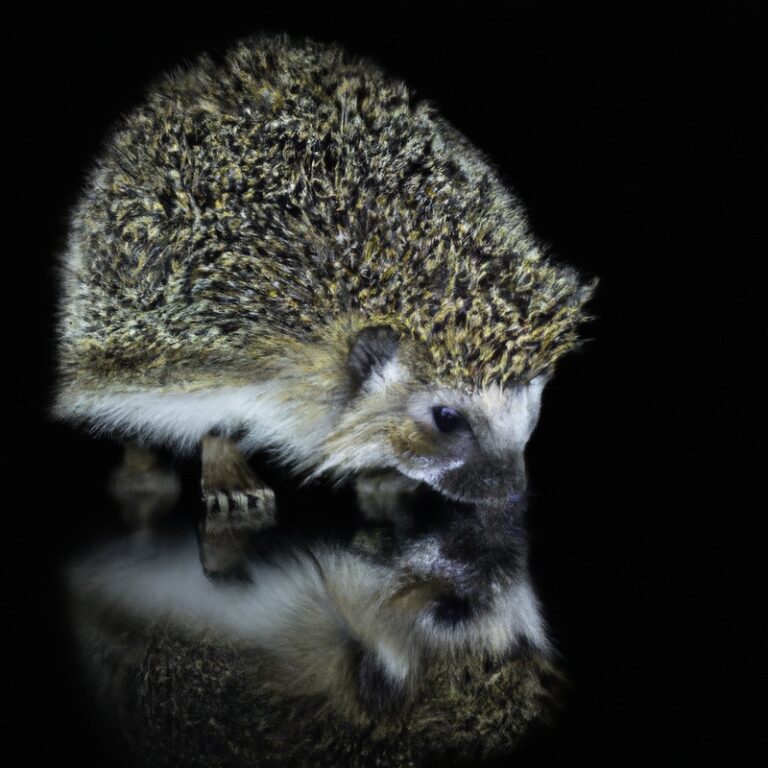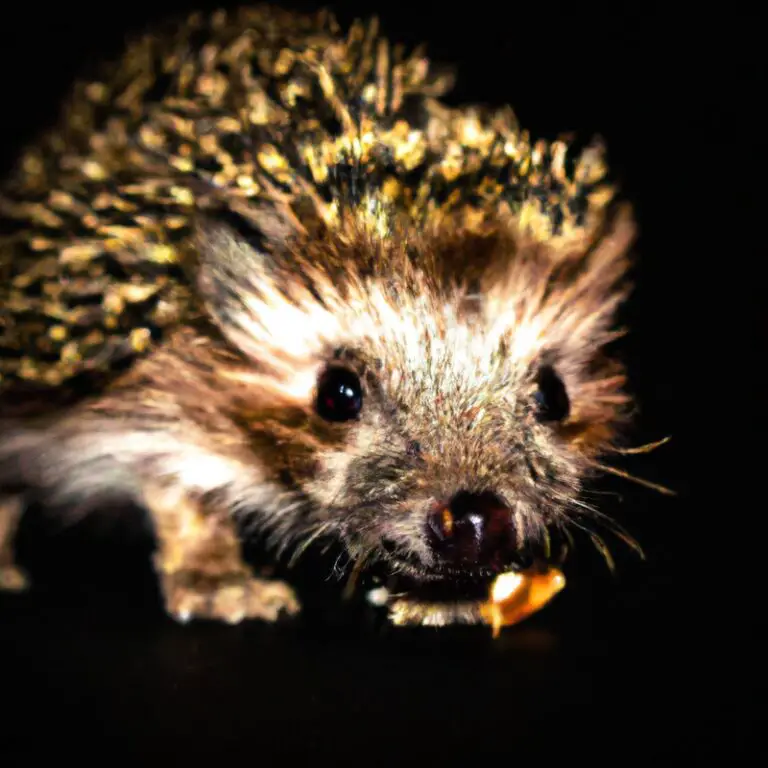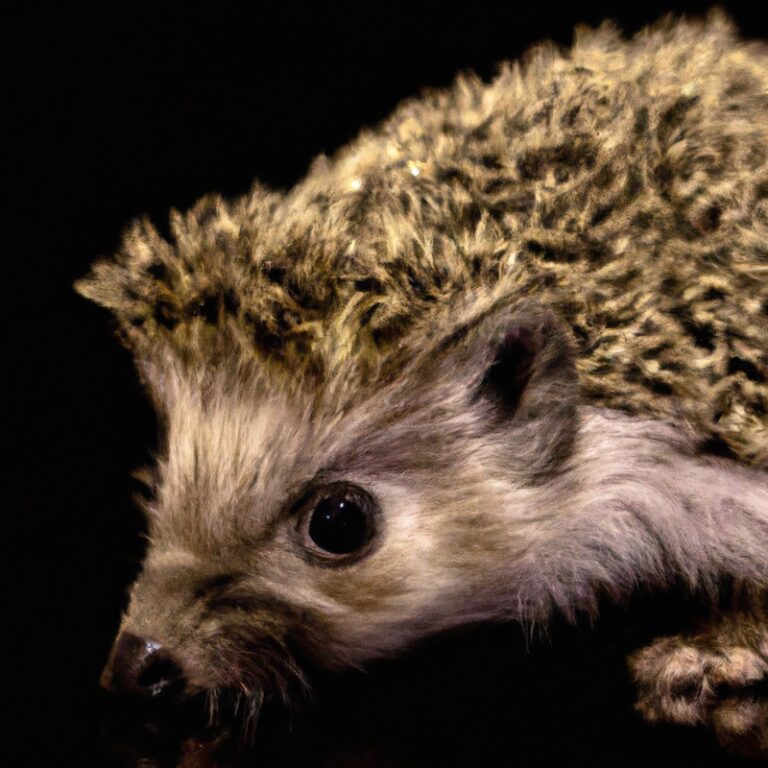How Do Hedgehogs Contribute To Biodiversity?
Key Takeaways:
- Hedgehogs contribute to biodiversity by controlling pest populations.
- Their foraging habits help disperse plant seeds, aiding in ecosystem diversity.
- Hedgehog populations are declining, threatening overall biodiversity.
- Creating hedgehog-friendly habitats can help promote their role in biodiversity conservation.
Hey there nature lovers! Have you ever wondered how hedgehogs, those cute and spiky creatures, play a vital role in maintaining biodiversity? Well, get ready to be amazed because these fascinating animals have a lot more to offer than just their adorable appearance.
In this article, we’ll delve into the various ways hedgehogs contribute to biodiversity, from acting as natural pest controllers to aiding in seed dispersal.
We’ll also explore their impact on plant and animal diversity, as well as their role in promoting ecosystem stability. So buckle up and get ready for a journey into the marvelous world of hedgehogs and biodiversity!
| Hedgehogs | Contribution to Biodiversity |
|---|---|
| 1. Natural Pest Control | Hedgehogs consume a variety of invertebrates, such as slugs, snails, and insects. By keeping the populations of these organisms in check, hedgehogs contribute to overall ecosystem balance. |
| 2. Seed Distribution | As hedgehogs move through their habitats, they often carry seeds of various plants on their quills or in their droppings. This aids in the dispersal and germination of seeds, promoting the growth of different plant species. |
| 3. Habitat Creation | Hedgehogs create burrows that provide shelter for themselves and other small animals. These burrows also contribute to soil aeration and moisture retention, benefiting plant growth and supporting a diverse range of organisms. |
| 4. Food Source for Predators | Hedgehogs serve as a food source for various predators, including foxes, birds of prey, and snakes. Their presence in the food chain helps sustain these predator populations, contributing to overall ecosystem stability. |
| 5. Indicators of Ecosystem Health | The presence or absence of hedgehogs in an ecosystem can serve as an indicator of its overall health. Declines in hedgehog populations may suggest environmental changes or imbalances that require attention. |
The role of hedgehogs in maintaining biodiversity
Hedgehogs play a crucial role in maintaining biodiversity by their contributions to pest control, seed dispersal, soil health, and regulating prey and predator populations.
Hedgehogs as natural pest controllers
Hedgehogs are natural pest controllers. They have a beneficial role in controlling the populations of insects, slugs, and snails in gardens and other habitats.
Hedgehogs are nocturnal creatures that actively hunt and feed on these pests during the night.
Their diet consists of a variety of insects and small invertebrates, making them effective at reducing the numbers of these pests that can damage plants and crops. By naturally controlling pest populations, hedgehogs contribute to maintaining a healthy ecosystem and promoting biodiversity.
Hedgehogs and seed dispersal
Hedgehogs play a role in seed dispersal, contributing to biodiversity.
As they move through their habitats, hedgehogs can inadvertently pick up seeds on their fur.
These seeds can then be carried to different locations where they are deposited through the hedgehog’s droppings.
This dispersal process helps plants to colonize new areas and enhances the diversity of plant species in the ecosystem.
Although not intentional, hedgehogs unintentionally aid in the spread of plant seeds, supporting the overall health and variety of plant life.
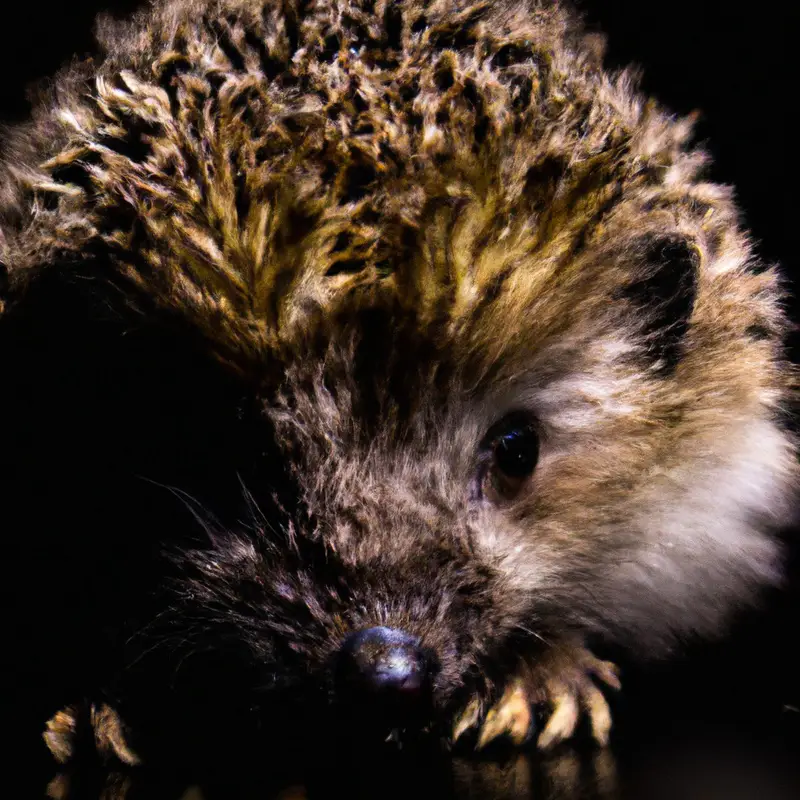
Hedgehogs and soil health
Hedgehogs play an important role in maintaining soil health. As they forage for food, their digging and burrowing activities help to aerate the soil, allowing oxygen to reach plant roots and promoting nutrient uptake.
Additionally, their droppings act as natural fertilizers, enriching the soil with essential nutrients.
This healthier soil supports the growth of diverse plant species, which in turn provides habitat and food for other animals, contributing to overall biodiversity. So, by simply going about their daily activities, hedgehogs are inadvertently helping to improve soil health and ecosystem balance.
Hedgehogs as prey and predator regulators
Hedgehogs play a vital role in regulating prey populations and controlling predators. As nocturnal creatures, they actively search for and consume a wide range of invertebrates, such as slugs, snails, and insects, helping to control their populations.
By doing so, hedgehogs limit the damage these prey species can cause to gardens and crops.
Additionally, hedgehogs can also act as predator regulators. They are known to prey on small vertebrates like frogs, lizards, and baby birds.
This not only helps control the populations of these species but also prevents them from becoming dominant and disrupting the balance of local ecosystems.
Hedgehogs and plant diversity
Hedgehogs play a role in maintaining plant diversity through pollination and seed dispersal.
Hedgehogs and pollination
Hedgehogs do not play a direct role in pollination. Pollination is primarily carried out by insects such as bees, butterflies, and moths.
These insects are attracted to flowers by their colors, shapes, and scents, and they transfer pollen from one flower to another as they move between them.
While hedgehogs may occasionally come into contact with flowers while foraging for food, their impact on pollination is minimal compared to insects. Therefore, when it comes to pollination and hedgehogs, their contribution is limited.
Hedgehogs and seed dispersal
Hedgehogs play a vital role in seed dispersal by their foraging behavior.
As they move through their environment, hedgehogs inadvertently collect seeds on their spines and fur.
These seeds then get transported to different areas as the hedgehogs continue their journey.
This process helps to spread plant species and contributes to the overall biodiversity of the ecosystem.
So, next time you see a hedgehog roaming around, remember that they’re not just cute little creatures, they’re also helping to disperse seeds and support plant diversity.
Hedgehogs and plant reproduction
Hedgehogs play a significant role in plant reproduction through their foraging behavior.
As they move around, hedgehogs help in dispersing seeds from various plants, aiding in their pollination and reproductive success.
Additionally, hedgehogs also contribute to soil health by depositing nutrient-rich droppings, which can benefit plant growth.
So, these adorable creatures not only bring joy to our gardens but also actively contribute to plant diversity and reproduction.
Hedgehogs and animal diversity
Hedgehogs play a role in supporting animal diversity by interacting with other species in their ecosystem.
Hedgehogs as food for predators
Hedgehogs play an important role in the ecosystem as a source of food for predators. Various animals, including foxes, owls, badgers, and birds of prey, rely on hedgehogs as part of their diet.
By serving as prey, hedgehogs help maintain the balance of predator-prey relationships in the natural world.
Their presence contributes to the overall biodiversity of their habitats, ensuring the survival of both predator and prey species.
Hedgehogs as consumers of invertebrates
Hedgehogs play an important role in controlling populations of invertebrates.
They primarily consume insects, slugs, snails, and worms, helping to keep their numbers in check.
By feeding on these invertebrates, hedgehogs contribute to the overall balance of ecosystems.
Their diet also helps prevent damage to plants caused by excessive herbivory.
So, hedgehogs are valuable consumers of invertebrates that contribute to biodiversity by maintaining ecological equilibrium.
Hedgehogs and the food web
Hedgehogs play an important role in the food web.
As omnivores, they consume a variety of insects, slugs, snails, and even small vertebrates like frogs and mice.
By controlling the population of these creatures, hedgehogs help maintain a balanced ecosystem.
Additionally, hedgehogs themselves are prey for larger predators, such as foxes and owls.
Their presence in the food web contributes to the overall biodiversity of an area.
So, by supporting hedgehog conservation efforts, you are indirectly supporting the health and diversity of the entire ecosystem.
Hedgehogs and ecosystem stability
Hedgehogs play a vital role in maintaining ecosystem stability.
Hedgehogs and population control
Hedgehogs play a crucial role in population control within ecosystems.
By feasting on insects, small mammals, and even reptiles, they help maintain a balance in the ecosystem by preventing these populations from booming.
With their voracious appetite for pests, hedgehogs contribute to the overall health and stability of their habitats.
This natural form of population control helps to regulate the numbers of various species, ensuring a harmonious coexistence within the ecosystem.
With hedgehogs around, the ecosystem can thrive without being overwhelmed by certain populations.
Hedgehogs and ecosystem resilience
Hedgehogs play a crucial role in enhancing ecosystem resilience.
They help control pest populations by preying on insects, slugs, and snails, which can damage crops and plants.
By managing these populations, hedgehogs help maintain a stable balance within ecosystems.
Additionally, hedgehogs contribute to nutrient cycling by dispersing seeds through their droppings, aiding in plant regeneration.
Their burrowing activities also help aerate and improve soil quality.
Overall, hedgehogs are important contributors to the health and stability of ecosystems.
Hedgehogs and food availability for other species
Hedgehogs play a crucial role in the ecosystem by helping maintain food availability for other species.
They are natural predators of pests like slugs, snails, and insects, which can pose a threat to crop production and plant diversity.
By feeding on these pests, hedgehogs regulate their populations, ensuring that other species have enough food to thrive.
Furthermore, their droppings act as natural fertilizers, promoting the growth of plants, which in turn supports the food chains of various animals.
Hedgehogs truly contribute to the balance and biodiversity of our ecosystems.
Tips for supporting hedgehogs and biodiversity in your area
To support hedgehogs and biodiversity in your area, you can create hedgehog-friendly habitats and provide supplementary food and water. Additionally, minimizing pesticide use and contributing to local conservation efforts can make a big difference.
Creating hedgehog-friendly habitats
Creating hedgehog-friendly habitats is essential for supporting their population and promoting biodiversity.
Here are some tips to make your garden or area more hedgehog-friendly:
- Provide shelter by creating log piles, leaf piles, or a hedgehog house.
- Install a hedgehog-friendly fence or gateway to allow them to roam freely.
- Avoid using pesticides and chemicals on your garden to prevent harm to hedgehogs and their food sources.
- Provide access to water by placing a shallow dish or small pond in your garden.
- Keep your garden safe by covering drains and checking for any hazards like netting or sharp objects.
Providing supplementary food and water for hedgehogs
To support hedgehogs and their contribution to biodiversity, providing supplementary food and water is essential.
Hedgehogs are omnivores, so a varied diet of wet cat or dog food, mealworms, and chopped fruits can be offered.
Ensure they have access to fresh water, but avoid using milk.
Place the food and water in shallow dishes to prevent drowning.
It’s important to monitor the food and water regularly, keeping it clean and disposing of any leftovers.
Additionally, creating a safe and accessible hedgehog-friendly garden will further enhance their habitat.
Minimizing pesticide use
To minimize pesticide use, consider these tips:
- Choose natural alternatives: Use organic or natural pest control methods, such as companion planting, insect-repelling plants, or homemade organic sprays.
- Encourage beneficial insects: Create a habitat that attracts beneficial insects like ladybugs, lacewings, and parasitic wasps, as they can help control pests naturally.
- Practice good garden maintenance: Regularly remove weeds, keep plants healthy, and maintain proper sanitation to reduce pest infestations.
- Use physical barriers: Install fences, mesh screens, or row covers to protect plants from pests instead of resorting to chemical pesticides.
- Attract natural predators: Create a welcoming environment for beneficial predators like birds, frogs, and spiders by providing shelter and food sources.
Remember, reducing pesticide use not only benefits hedgehogs but also helps preserve overall biodiversity in your area.
Contributing to local conservation efforts
To contribute to local conservation efforts, you can start by creating a welcoming habitat for wildlife in your area. Plant native plants in your garden to provide food and shelter for local species.
Avoid using pesticides and chemicals that can harm the environment.
Conserve water by using it efficiently and reducing waste. Support local conservation organizations and participate in community initiatives.
Spread awareness about the importance of biodiversity and inspire others to take action.
Every small step can make a big difference in preserving and promoting local wildlife and ecosystems.
Frequently Asked Questions about hedgehogs and biodiversity
Are hedgehogs native to all regions?
No, hedgehogs are not native to all regions.
They are mainly found in Europe, Asia, and Africa.
Hedgehogs have been introduced to some parts of North America and New Zealand.
However, they are not native to these areas and their presence can have negative impacts on local ecosystems.
It’s important to protect native species and avoid introducing non-native animals.
Do hedgehogs eat garden plants?
Hedgehogs primarily eat insects and invertebrates, but they may also consume small mammals, amphibians, and birds.
However, when it comes to garden plants, hedgehogs do not pose a significant threat.
They are unlikely to eat garden plants as they mainly prefer a diet that consists of insects and other small creatures.
So if you’re worried about hedgehogs eating your garden plants, you can rest easy!
What are some threats to hedgehogs and biodiversity?
Some threats to hedgehogs and biodiversity include habitat loss, pollution, and the use of pesticides.
As human activity expands, it often encroaches upon the natural habitats of hedgehogs, leaving them with limited space to forage and hibernate.
Pollution from various sources, such as chemicals and plastics, can also harm hedgehogs and disrupt the balance of ecosystems.
Additionally, the use of pesticides in agriculture can have detrimental effects on hedgehogs and other animals, as they may consume contaminated prey.
It is important to raise awareness about these threats and take measures to protect hedgehogs and promote biodiversity.
Can I keep a hedgehog as a pet and still support biodiversity?
Yes, you can keep a hedgehog as a pet and still support biodiversity.
While hedgehogs may not directly contribute to biodiversity in the same way as other animals do, you can still make a positive impact by taking certain actions.
Here are a few suggestions:
- Provide a natural habitat: Create a suitable environment for your hedgehog that mimics its natural habitat. This can include providing nesting materials, hiding spots, and access to a varied diet.
- Avoid pesticides: When caring for your hedgehog, be mindful of using organic and natural pest control methods. This helps to minimize the negative impact on biodiversity by reducing pesticide use in your home and garden.
- Support local wildlife: Many wild animals, including hedgehogs, rely on a diverse and healthy ecosystem. You can support biodiversity by planting native plants in your garden, providing water sources, and creating a welcoming environment for other wildlife.
By implementing these measures and being conscious of your impact on the environment, you can enjoy the companionship of a hedgehog while still making a positive contribution to biodiversity.
Final Verdict
Hedgehogs play a crucial role in maintaining biodiversity by acting as natural pest controllers, seed dispersers, and regulators of prey and predator populations. They also contribute to plant diversity through pollination and assisting in seed dispersal for plant reproduction.
Furthermore, hedgehogs support animal diversity by serving as food for predators and consuming invertebrates, while also maintaining ecosystem stability through population control and enhancing resilience.
To support hedgehogs and biodiversity, creating hedgehog-friendly habitats, providing supplementary food and water, minimizing pesticide use, and contributing to local conservation efforts are recommended.


